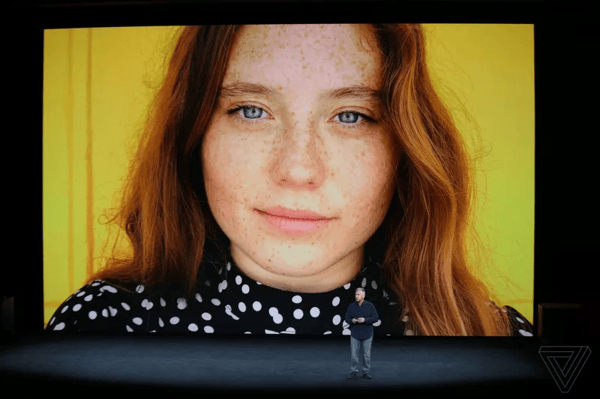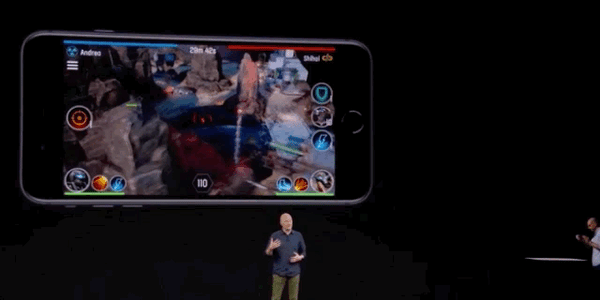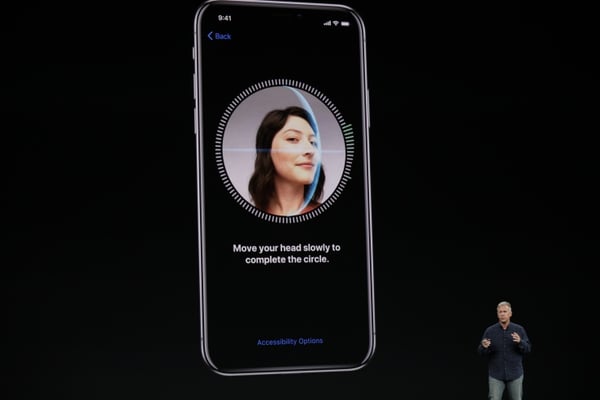When it comes to product-centric events and announcements, advance leaks and rumors are nothing new for Apple. But something about this round was different. The pre-emptive reveals came with more detail, more clamor, and -- at least for us -- more excitement.
"This," we thought, "is going to be completely bonkers."
For the most part, our expectations were accurate. Most of the rumored product announcements, names, and price points turned out to be correct, and yes -- the seats at the brand new Steve Jobs Theatre were as plush and comfortable as promised (more on that later).
But in case you didn't have time to attend or stream the two-hour event, fear not -- we covered it for you. Behold: Here's what you missed.
The Apple Event Was Totally About the iPhone 10th Anniversary
The Venue
Part of the anticipation leading up to September 12, 2017 was the fact that it was the inaugural event for Apple's Steve Jobs Theater. The morning kicked off with a tribute to its namesake, in the form of his voice speaking on the heart and mission of Apple, and one line of text displayed on a large-screen black backdrop: "Welcome to the Steve Jobs Theater".
Watch Apple’s moving tribute to Steve Jobs at the start of the iPhone X event. pic.twitter.com/dhrYjVsxal
— Recode (@Recode) September 13, 2017
"I love hearing his voice," were the opening remarks of Apple CEO Tim Cook. "We dedicate this theater to Steve, because we love him, and because he loved days like this."
The theater is merely one segment of the much larger landscape of Apple Park: an allegedly billion-dollar investment to make into a reality what is said to be an age-old vision of Jobs himself. Even the theater's leather seats were said to be valued at $14,000, and according to this tweet from TechCrunch, that came with quite to ROI.
The seats were said to cost somewhere around $14,000 a piece. They feel like it. My buttocks are cupped by their supple flesh #AppleEvent pic.twitter.com/hPbwze6v7t
— TechCrunch (@TechCrunch) September 12, 2017
It's as if the venue was a preview to the commemorative nature of the event in its entirety. Sure, new products and features were announced with vim and vigor, but not without credit where credit -- according to Apple -- was due. Be it Jobs himself, customers, or the technology that served as a foundation for what was unveiled, there was an undertone of "what came before it" to everything that was showcased.
And it began with a place so many of us know well: The Apple Store ... but with a new name.
Retail
The first major player to take the stage after Cook was Angela Ahrendts, Apple's SVP of retail. Gone are the days of the Apple "store," she said -- instead, these flagship retail locations will be known as "town squares," with locations slated for New York's 5th Avenue, Paris, Milan, and Chicago's Magnificent Mile.
The in-store experience is also getting an upgrade, including a new initiative called Today in Apple, which will provide workshops and other hands-on ways for customers to learn how to use Apple products to pursue their passions. A big part of it, of course, is the idea of creating a live community rooted in a love for the brand -- a sentiment that aligns with the neighborhood-esque naming (and what we anticipate to be design) theme of the new retail presence.
This summer, Today in Apple launches at retail locations, focused on community, workshops. #AppleEvent pic.twitter.com/cQ8HVEY4IU
— CNET (@CNET) September 12, 2017
Apple Watch
Once upon a time -- no pun intended -- a watch served the purpose of letting its wearer know if she was late for a meeting. After yesterday, there are no two ways about it: Watches are high-end items that are used to make a statement, help you maintain a healthy lifestyle, or in the most extreme cases, alert you to a potentially life-threatening situation.
The Series 3, which is the latest generation of the Apple Watch -- now the "number one watch in the world," according to the announcement -- has completely redefined the concept of a watch. The more expensive version (priced at $399) has cellular connectivity, allowing you to make and receive calls on the same number you use for your phone, assuming it's an Apple device. Not only that, but it comes with streaming music capabilities, boasting its ability to let users go for a run and leave their phones at home.
But the Series 3 also comes with a new emphasis on health and wellness, most notably on heart health. Using the new Heart Rate app, Apple says it will collect and synthesize heart rate data from users to not only compile its Heart Rate Study, but also to alert users when something appears to be irregular. For the moment, however, the Series 3 has a built-in feature to let users know when their heart rates elevate while at rest -- what one reporter relatably joked as "blogger mode."
"This is what we at apple call 'blogger mode'" https://t.co/SKjKd7y0o5
— ಠ_ಠ (@MikeIsaac) September 12, 2017
What's interesting is that the casing for the Series 3 is about the same size as the Series 2, which is quite impressive, considering all of its capabilities. Here's Apple COO Jeff Williams breaking it all down:
Apple TV
There was less buzz around Apple TV leading up to the event, which was reflected in the announcements today. The biggest unveiling to come from this category is the introduction of Apple TV 4K, which boils down to image quality and viewing experience. Yahoo! correspondent JP Mangalindan concisely described why it matters:
Cue's talking about why we should care about 4K images. Long story, short: It's sharper and more colorful. #AppleEvent
— JP Mangalindan (@JPManga) September 12, 2017
One other pivotal Apple TV announcement was that it will now come with live sports, which might signal to some a further decline in the need for cable television -- keep in mind, live sports coverage has been available digitally/via live stream for a while now through Twitter and other platforms.
I'll be honest: At this point, it seemed like no one was really too concerned with Apple TV, and was itching to get to the iPhone announcements -- at least, I was. Keep in mind that 2017 marks the 10-year anniversary of the original iPhone debut (Seriously? How has an entire decade gone by since then?), and many of us anticipated that the event would pay some level of tribute to that chronological landmark. Whether or not that would take form as product, we weren't sure -- but in the end, it did, and it was, as they say, "Some next-level sh*t."
The Main Event: iPhone Announcements
iPhone 8 & iPhone 8 Plus
I know. I know -- you want to hear about the iPhone X. We'll get to that, but first, we have to talk about the iPhone 8 and 8 Plus. (Notice, by the way, how Apple conveniently skipped a "9" edition.)
The iPhone 8 models aren't exactly anything to sniff at. Pricing starts at $699 -- an even higher point than what most people thought was a stratospheric price tag for Google's inaugural Pixel -- and the phones come with some impressive new features, mostly in the realms of display and augmented reality (AR). Plus, its speakers have improved volume capabilities.
As for the improved visual features, that credit goes to its new retina displays, it was said at the event -- what Apple calls "3D touch tech" is built into these models for True Tone display. The camera, too, is vastly improved from previous editions, with a 12-megapixel sensor that offers better image stabilization. In one of the sample photos shown at the event, the image quality was so precise that the photographer's reflection could be seen in the subject's eye. Even cooler: The new camera app has machine learning facial recognition capabilities, so that lighting can be adjusted according to individual facial features.

Source: The Verge
Then, there are the AR features, which will undoubtedly bring joy to gamers. Apple has been trying to make a pretty big deal about its ARKit developer tools and resources, which its website describes as "a new framework that allows you to [take] apps beyond the screen, freeing them to interact with the real world in entirely new ways." Think Pokémon GO, but much, much more sophisticated and realistic.
Two representatives from Directive Games took the stage to demonstrate what was an impressive and -- if we're being honest -- downright cool look at how ARKit technology will manifest itself in the new iPhone's features. Have a look:

Source: The Verge
But what really brought glee to charger-forgetters everywhere was the introduction of wireless iPhone charger capabilities. A new flat charging mat -- which didn't come with any release or availability date information, other than "next year" -- will be powered by Qi technology, and is promised to work universally across all of your latest-generation Apple devices. If that technology sounds familiar, that might be because it's been supported by Samsung devices for some time now, and you may have seen something similar in certain shops like Starbucks: a flat, circular feature built into some sort of surface that claims to be able to charge your mobile device. (Personally, I've never been able to get it to work, but if you've had any success, please report back.)
iPhone X
Imagine: It's the future. You live in a world where your phone not only has wirelessly charging and eerily realistic AR capabilities, but also has no home button. It's a world where your phone -- not to mention, your stored payment information -- is unlocked by looking at it, and emojis are now "Animojis": animated characters that reflect your facial expressions and can speak on your behalf.
Yes, it was quite a morning, if for no other reason than that the audience being treated to Apple SVP of Software Engineering Craig Federighi making animal noises to demonstrate that last feature.
Face ID
But really, for anyone else who grew up watching shows like "Star Trek," this was really something. It was clear that Apple has invested hours upon hours into technology like Face ID -- which, unfortunately, malfunctioned when Federighi tried to demonstrate it.
That moment aside, the explanation behind how this technology came to fruition -- and how it was tested over, and over, and over again to ensure its security -- might perhaps be what sets Apple apart as a leader in the realm of mobile technology. How does it work? With the TrueDepth camera system, which we'll let Apple's official statement explain:
"The IR image and dot pattern are pushed through neural networks to create a mathematical model of your face and send the data to the secure enclave to confirm a match, while adapting to physical changes in appearance over time. All saved facial information is protected by the secure enclave to keep data extremely secure, while all of the processing is done on-device and not in the cloud to protect user privacy. Face ID only unlocks iPhone X when customers look at it and is designed to prevent spoofing by photos or masks."
Face ID is also designed to adapt to any temporary changes to the way your face might be presented -- things like growing a beard, cutting your hair, or wearing a hat. And yes, there is a one in 1,000,000 chance that someone else's face can unlock your phone. That's a fairly small chance, and it's worth noting that the team behind Face ID even enlisted the help of Hollywood makeup artists create myriad, life-like masks to test and perfect the feature.
Setting up Face ID is similar to the way current iPhone users do so with Touch ID -- by pressing your thumb at a variety of angles to get the device to recognize only your unique fingerprint. Think of this new iPhone X method as an angular facial recognition setup process.

Source: TechCrunch
To be clear, Face ID will replace Touch ID, leaving some to wonder how to unlock your phone, should Face ID malfunction. Given that users have the option of opting out of Face ID, there must be an alternative, and from the looks of Federighi's experience, there might the option to enter a numerical passcode, which is what users are prompted to do when Touch ID doesn't work on current iPhone models.
For many, Face ID raises concerns of privacy and security, especially since it can be easily attached to the user's payment information. Apple has stated that personal facial recognition data won't be sent to the cloud -- more detail can be found about that in the iOS security white paper.
Everything Else
The iPhone X will boast some pretty cutting-edge features -- as juvenile as it might seem, it is pretty compelling to see technology that makes an emoji speak with the exact dictation and facial movement as yours -- but the Face ID demonstrations and explanations took up the majority of the iPhone X time slot.
Like the iPhone 8 models, it will come with wireless charging capabilities, as well as even better camera features, like a zero shudder lag that results in high-quality photos of moving subjects. It comes with a "super retina display," as well as battery life that lasts two hours longer than the iPhone 7. And, of course, it comes with an equally heavyweight-class price tag: iPhone X models start at $999, are available for pre-order on October 27, and will ship starting November 2.
But we couldn't leave you with a classic, goosebump-inducing Apple promo video. So enjoy -- and if you end up getting your hands one one of these fancy new devices, let us know how it goes.
Source: Apple
Featured image: Apple
No comments:
Post a Comment